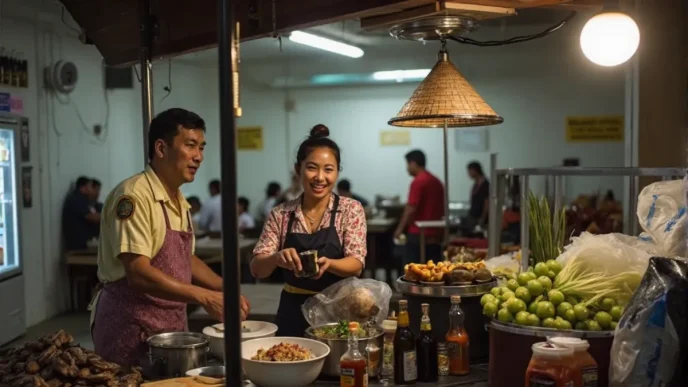On March 28, 2025, Myanmar endured one of the most devastating earthquakes in its modern history. A 7.7-magnitude quake struck the Sagaing region, claiming over 3,000 lives and leaving a trail of destruction across the South-east Asian nation. The tremors reverberated far beyond Myanmar’s borders, shaking cities as distant as Hanoi, over 2,000 kilometers away, and Bangkok, more than 1,000 kilometers from the epicenter, where a skyscraper under construction collapsed. As rescue workers continue to sift through rubble in Mandalay, questions arise about the causes of such a catastrophic event and the vulnerability of neighboring regions, including Singapore, often considered a safe haven from seismic activity.
The Geological Forces Behind the Disaster
Myanmar sits at a volatile crossroads of tectonic activity, where four major plates—the Eurasian, Indian, Sunda, and Burma microplate—converge. The March 28 earthquake has been attributed to a strike-slip movement along the Sagaing Fault, a 1,400-kilometer fracture running from north to south through the country. This fault, where the Indian and Sunda plates slide horizontally past each other, unleashed powerful seismic waves that experts say were amplified by the scale of the event.
Associate Professor Wei Shengji from the Asian School of Environment at Nanyang Technological University (NTU) in Singapore explained that the intensity of the quake allowed seismic waves to travel vast distances. “The size of the event generated strong waves that could propagate far beyond the epicenter” he said. In Bangkok, the effect was particularly pronounced due to the soft soils of the Chao Phraya delta, which intensified the shaking and contributed to structural failures like the collapsed skyscraper.
Buildings, especially high-rises, have a natural frequency of vibration influenced by their design and materials. When seismic waves match this frequency, the shaking can be amplified, posing severe risks. Professor Ivan Au from NTU’s School of Civil and Environmental Engineering highlighted additional dangers, noting that water in rooftop pools—seen splashing dramatically in viral videos from Bangkok—can exacerbate vibrations. “If such forces are not accounted for in design, they may induce additional damage” he warned.
Regional Ripples: From Mandalay to Bangkok
In Mandalay, images of rescue workers navigating the debris of collapsed buildings on April 5 underscore the human toll of the disaster. The quake’s impact was not confined to Myanmar, however. The tremors felt in Bangkok revealed the vulnerability of urban centers far from the epicenter, particularly those built on geologically unstable ground. The collapse of a skyscraper under construction in the Thai capital has sparked urgent discussions about building codes and earthquake preparedness in the region.
Professor Au emphasized that modern structures must be designed to withstand horizontal vibrations in addition to vertical loads. This includes reinforcing columns, beams, and joints for higher load capacities and ensuring ductility—allowing structures to deform without breaking. Examples like Taipei 101, a 101-storey skyscraper in Taiwan equipped with a 660-tonne steel pendulum to counteract swaying during quakes, illustrate the kind of engineering solutions needed. Yet, such measures are not universally adopted, leaving many buildings in South-east Asia at risk.
Soil conditions also play a critical role. In areas prone to soil liquefaction—a phenomenon where violent shaking causes soil to temporarily lose strength—buildings can suffer catastrophic damage. Bangkok’s soft delta soils amplified the March 28 tremors, serving as a stark reminder of how geology can turn a distant quake into a local crisis.
Is Singapore Truly Safe?
Singapore, often perceived as immune to seismic threats due to its location away from major fault lines, is not entirely free from concern. While the city-state and its immediate surroundings experience little seismic activity, experts caution that the region’s risk profile remains poorly understood. Professor Wei noted that large earthquakes in low-activity zones may recur only every few thousand years, making it difficult to gather sufficient data for accurate risk assessments. “There are insufficient research investigations to fully evaluate local seismic risk” he said.
The proximity of the Sumatran Fault—a 1,900-kilometer strike-slip fault similar to the Sagaing Fault—raises additional concerns. Located just 400 kilometers from Singapore, it serves as a reminder that the city-state is not as isolated from tectonic threats as many assume. The events in Bangkok, where soft soils amplified distant tremors, suggest that Singapore’s risk assessment must consider a wider geographic scope.
Fortunately, Singapore has taken steps to address potential seismic impacts. Professor Au pointed out that, although the city is not considered earthquake-prone, building designs incorporate protections aligned with local standards. Singapore’s National Annex, part of the Eurocode framework for structural design, includes provisions for earthquake resistance tailored to regional conditions. However, the question remains whether these measures are sufficient in the face of rare but powerful events originating from nearby faults.
Engineering Solutions and Future Preparedness
The Myanmar earthquake highlights the urgent need for South-east Asian nations to enhance earthquake preparedness. Professor Au advocates for innovative structural designs, such as diagonal braces and damping devices, to reduce vibration in buildings. Specialized tools like sloshing dampers or tuned liquid dampers—designed to absorb and dissipate seismic energy—could offer additional protection, though they are rarely implemented in standard construction.
Beyond engineering, regional cooperation is essential. The far-reaching effects of the March 28 quake demonstrate that seismic events do not respect borders. Countries like Thailand, Vietnam, and Singapore must share data and strategies to mitigate risks, particularly in urban centers with high population densities and critical infrastructure. In Bangkok, the collapse of a skyscraper serves as a wake-up call for stricter enforcement of building codes, especially in areas with challenging soil conditions.
For Singapore, the focus should be on expanding research into local seismic risks. Professor Wei’s call for broader risk assessments underscores the need for investment in geologic and seismic datasets. While the city-state’s current building standards offer some reassurance, complacency is not an option given the unpredictable nature of tectonic activity in the wider region.
Human Stories Amid the Rubble
As the death toll in Myanmar climbs past 3,000, the personal stories of loss and resilience emerge from the devastation. In Mandalay, families wait anxiously for news of loved ones trapped under collapsed structures. Across the border in Bangkok, residents recount the surreal experience of watching high-rise buildings sway, with rooftop pools spilling water in dramatic cascades. These human experiences, captured in viral footage and firsthand accounts, bring the scale of the disaster into sharp focus.
The psychological impact of such an event cannot be overlooked. Survivors in Myanmar face not only the loss of homes and livelihoods but also the trauma of living through one of the country’s worst natural disasters in a century. Aid organizations and regional governments must prioritize mental health support alongside physical reconstruction efforts.
Looking Ahead: A Region on Edge
The March 28 earthquake in Myanmar is a sobering reminder of South-east Asia’s tectonic volatility. As recovery efforts continue in Mandalay and beyond, the event raises pressing questions about regional preparedness and resilience. For Singapore, often seen as a bastion of stability, the distant tremors felt in Bangkok signal that no corner of the region is entirely immune. With faults like Sumatra’s lurking nearby, the city-state must remain vigilant, investing in research and infrastructure to safeguard its future against the unpredictable forces beneath the earth’s surface.
As scientists and engineers analyze the fallout from this disaster, one thing is clear: the ground beneath South-east Asia is far from settled, and the next quake may be closer than we think.














